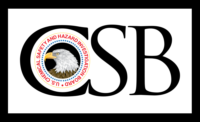When part of an ExxonMobil refinery exploded in February south of Los Angeles, smoke filled the sky and ash rained down on nearby neighborhoods. Four workers were injured, but at the time ExxonMobil told residents that no one in the community was ever in danger. But CBS News revealed it could have been much worse.
Vanessa Sutherland, recently appointed as head of the U.S. Chemical Safety Board, called it a "near miss."
"We were really, really lucky," Sutherland told CBS News. " It could have been much more catastrophic."
That’s because when the explosion happened, a piece of equipment weighing 80,000 pounds was sent flying nearly 100 feet.
Sources say a photo submitted to federal investigators and obtained by CBS News showed that piece landed feet away from a tank containing a form of hydrofluoric acid -- a highly toxic chemical that if released, can form a cloud of toxic gas that can drift for miles, potentially causing thousands of injuries and even death.
More than 200,000 people live within three miles of the plant. And in documents filed with the Environmental Protection Agency, ExxonMobil itself estimates in a worst-case scenario release of hydrofluoric acid, all of them within that distance could be injured or even die.
ExxonMobil disputed the notion of a near miss in February, telling CBS News they, "strongly disagree with any claims..." that there was a "significant risk to the hydrofluoric acid unit."
They wouldn't do an on camera interview, and referred CBS News' questions about the risks of hydrofluoric acid to an industry group, the Western States Petroleum Association.
"I think the technology that are employed in these refineries, for all the hazardous materials that are used, have proven to be very successful," said Spokesman Tupper Hull.
50 U.S. refineries use hydrofluoric acid. A United Steel Workers study that looked at half of those found 75 percent had near misses within the past three years -- and 50 percent of those would have impacted a community.
Source: CBS Evening News www.cbsnews.com




